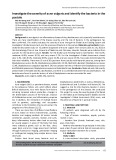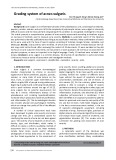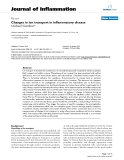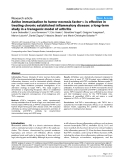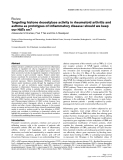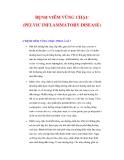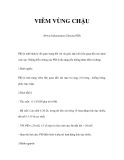
HUE JOURNAL OF MEDICINE AND PHARMACY ISSN 1859-3836
58
Hue Journal of Medicine and Pharmacy, Volume 14, No.2-2024
Corresponding author: Mai Ba Hoang Anh, email: mbhanh@huemed-univ.edu.vn
Recieved: 1/12/2023; Accepted: 19/2/2024; Published: 25/2/2024
DOI: 10.34071/jmp.2024.2.8
Grading system of acnes vulgaris
Tran Thi Quynh Trang1, Mai Ba Hoang Anh1*
(1) Dermatology Department, Hue University of Medicine and Pharmacy, Hue University
Abstract
Background: Acne vulgaris is an inflammatory disease of the pilosebaceous unit, consisting of comedones,
papules, pustules, nodules, and cysts. With the complexity of polymorphic nature, acne vulgaris is inherently
difficult to assess and the measurement and grading of this condition is a recognized challenge for clinicians.
This article presents a comprehensive preview of acne severity assessment according to timelines to give
an overview of methods used to measure acne severity. Methods: A systematic search of the literature
was performed to identify publications describing acne classification methods. Many combinations of search
terms were used with the help of search engines consisting of Pubmed, Google Scholar, Uptodate, and
Medscape. Results: 31 documents were retrieved, of which seven articles were removed because the full-
text copy could not be found. After reviewing the content of 24 documents, 12 were excluded as they did
not focus on acne outcome instruments, did not present a novel approach, did not focus on assessment of
physical symptoms, or were not reported in the English language. Finally, 12 methods were included in the
review. Conclusion: Acne vulgaris is a common disease, the diversity of classification is useful and allows
clinicians to choose a variety of assessment and investigation methods.
Keywords: acne vulgaris - assessment - classification - evaluation - severity - scale.
1. INTRODUCTION
Acne vulgaris is a common dermatological
disorder characterized by chronic or recurrent
appearance of facial comedones, papules, pustules,
nodules, or many kinds of acne lesions on the
neck, trunk, or proximal upper extremities [1]. It
affects roughly 85% of people during adolescence,
beginning in puberty and continuing into adulthood,
with a peak incidence around the age of 18 [2].
Acne vulgaris has no systemic repercussions but
may be a chronic inflammatory disease of the
pilosebaceous unit including hyperkeratinization,
increased sebum production, bacterial proliferation,
and inflammation [3]. This dermatological disorder
also involves physical and psychological morbidity,
which can change the quality of life of the affected
individuals [4].
A number of clinical assessment tools have
been developed to grade acne severity and assess
change over time, yet a standardized system for
classifying the severity of acne has not been agreed
upon. The severity of acne depends on lesion size,
density, type, and distribution, which makes it
difficult to create a uniform, qualitative method of
assessment that is simple to use. Most methods
include facial lesion counts and⁄or reference
photographs of various body areas. To date, there
are four broad approaches to the assessment of
acne severity: lesion counting, global acne severity
grading, subjective self-assessment, and multimodal
digital imaging [5]. To be more specific, acne lesion
counting involves the number of different lesion
types without the aspect of symptoms including
concentration, distribution, and size of lesions, or
skin redness [6]. On the contrary, global severity
grading is able to evaluate a range of aspects
pertinent to severity, including the number, type, and
size of lesions, but also the presence and coverage of
inflammation, erythema, and seborrhea [6]. When
subjective self-assessment is mentioned, it has
been identified as an approach provided by patients
based on perceived acne severity and quality of life
[7]. Last but not least, multi-modal imaging, which
is the best current assessment method, is the use
of specialist photographic equipment, including
ultraviolet A lamps, fluorescent lights, polarizers or
digital cameras, and computer algorithms to capture
and analyze lesion types, extent of erythema, and
pigmentation disorders [8]. This review aims to
summarize the grading and assessment of acne
severity.
2. METHODS
A systematic search of the literature was
performed in order to identify publications describing
acne classification methods. Many combinations






